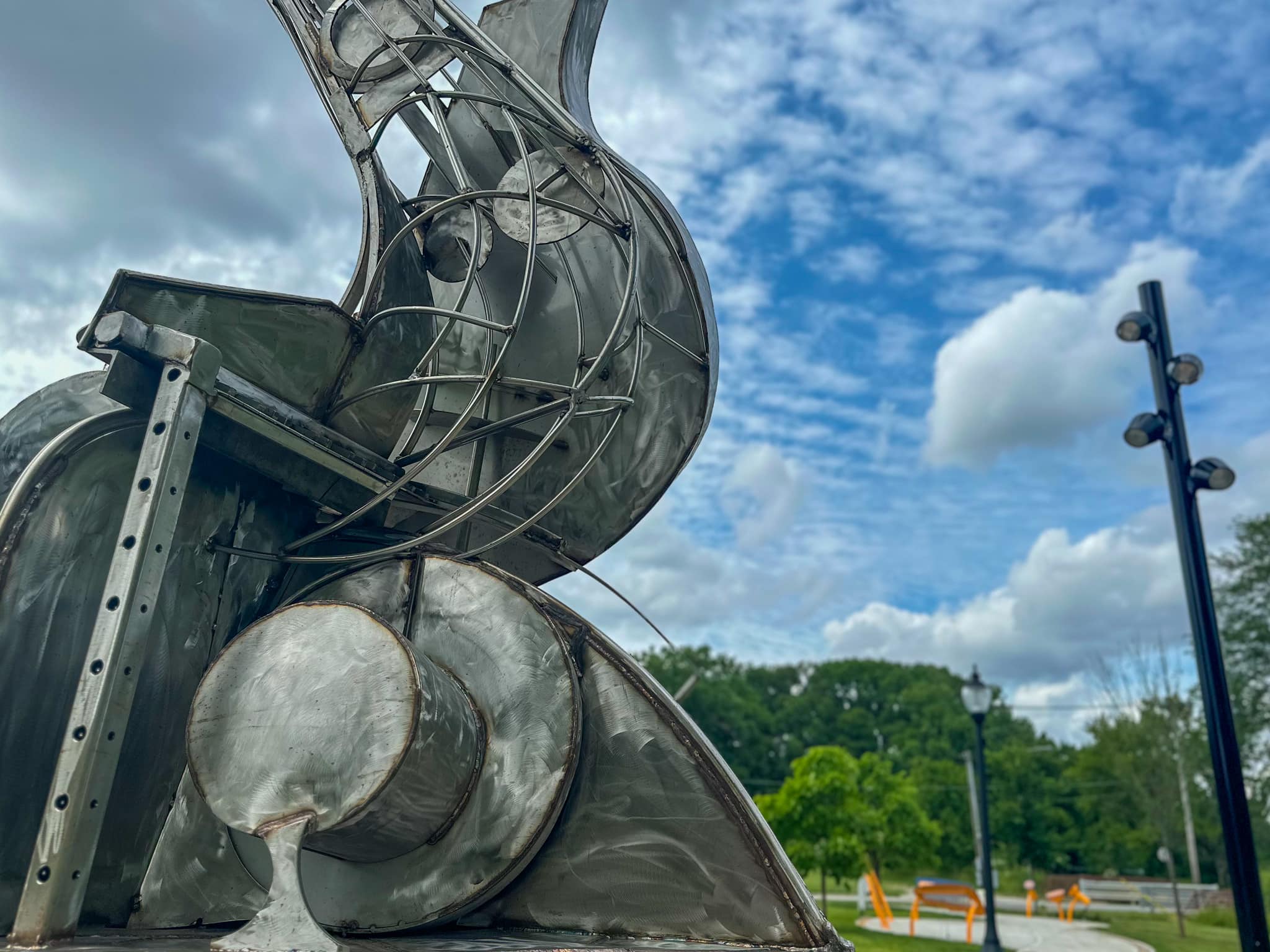Skelton Park
101 E. Washington St., Champaign
Skelton Park, a pocket park at the corner of N. First Street and E. Washington Street, is designed to pay homage to Champaign County's history of locally, nationally, and internationally recognized African American musicians.
Skelton Park was renovated in 2023 and 2024 as part of the Champaign County African American Heritage Trail with support from the Experience Champaign-Urbana Foundation, Champaign Park District, Rotary Club of Champaign, City of Champaign, Champaign County, and the Illinois Department of Commerce and Economic Opportunity. Co-Chairs of the Heritage Trail, Barbara Suggs Mason and Angela Rivers, as well as musician Nathaniel Banks were instrumental to the park’s design and development.
Its centerpiece is a sculpture by African American artist Preston Jackson that is designed to reflect a variety of musical instruments and genres of significance to local Black musicians. The sculpture is surrounded by a small plaza, lighting, a seating wall, and a sloped berm. Pathways invite residents and visitors to enter the park where they can play with interactive musical instruments and view bricks that were donated and inscribed by numerous community members to support the park’s development. A “Wall of Fame” sign that acknowledges specific African American musicians is planned for late 2024.
A ribbon cutting for Skelton Park was held on June 7, 2024. The event was attended by dozens of residents, supporters, and community members with connections to African American musicians from Champaign County.
Decade:
2020-2029
Location(s):
- Champaign, Illinois
Additional Champaign Trail Sites

